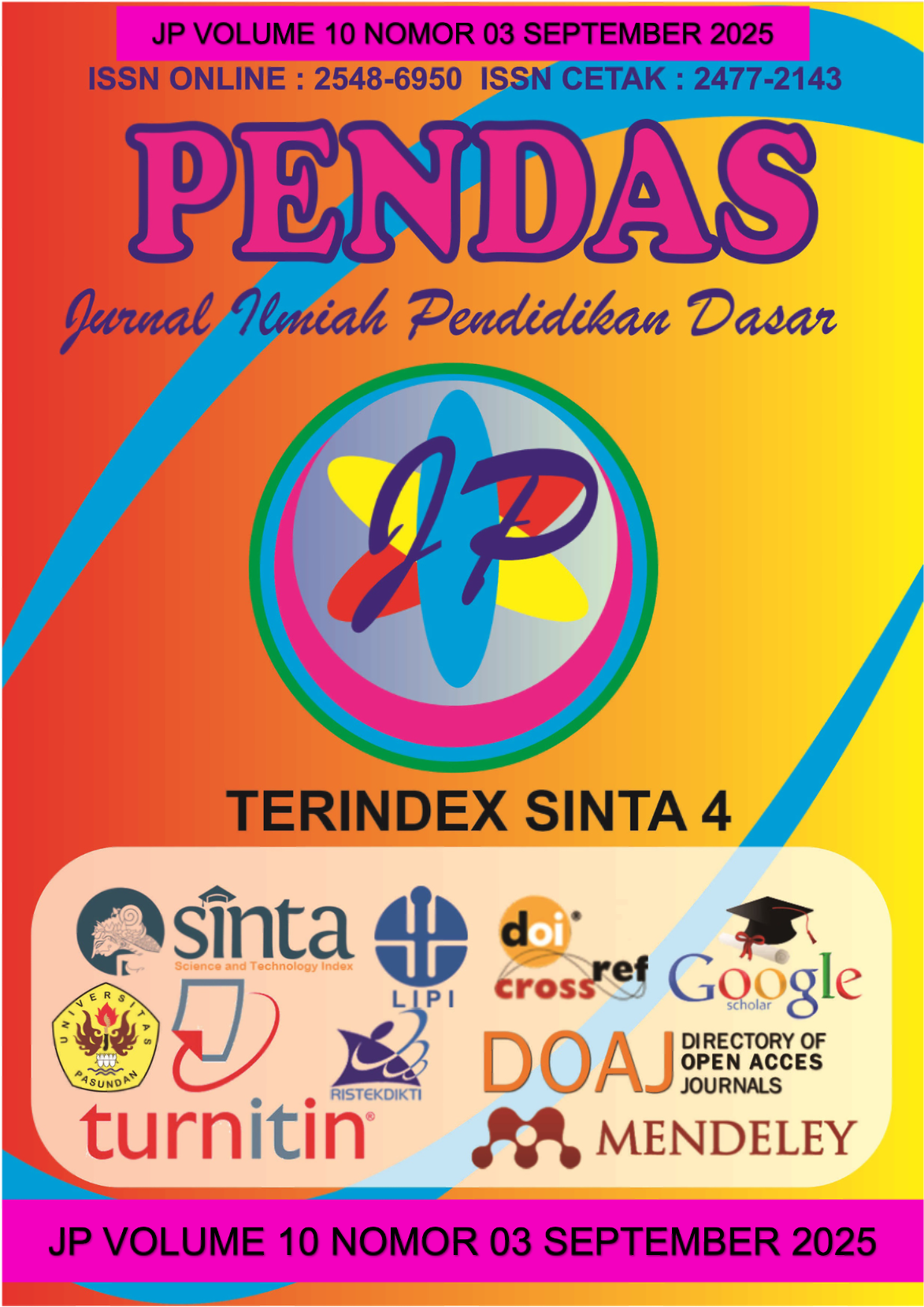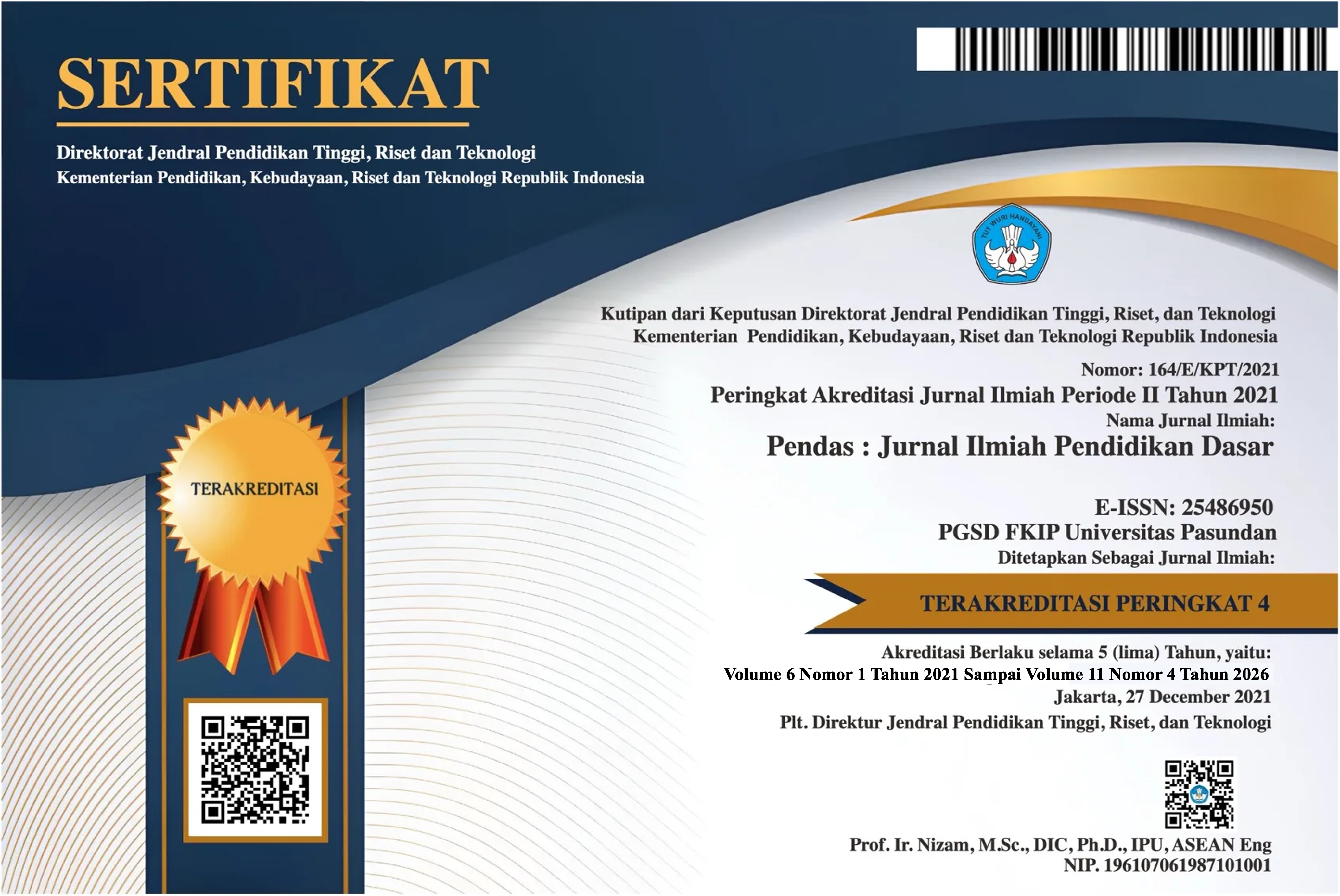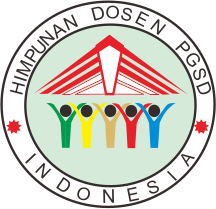PENGARUH MODEL SCIENCE, ENVIRONMENT, TECHNOLOGY, SOCIETY TERHADAP KETERAMPILAN BERPIKIR KRITIS SISWA PADA PEMBELAJARAN IPS KELAS V SD KELURAHAN KLENDER
DOI:
https://doi.org/10.23969/jp.v8i1.31806Keywords:
Critical Thinking, SETS Learning, Social Studies LearningAbstract
This study aims to examine the effect of implementing the Science, Environment, Technology, Society (SETS) learning model on critical thinking skills in social studies learning. This study is a quasi-experiment with a Pretest-Posttest Control Group Design. The population for this study was selected using cluster random sampling, namely all fifth-grade students at SDN Klender 10 Pagi, with a sample size of 50 students consisting of an experimental class and a control class. The experimental class received the SETS learning model treatment, while the control class received the STAD cooperative learning model treatment. The data collection technique used was a test in the form of 10 essay questions based on critical thinking skill indicators, with a scoring scale of 1-5 and a maximum score of 50. The test was administered twice, before the treatment (pretest) and after the treatment (posttest). Based on the results of descriptive data analysis, it was found that the average critical thinking skill score of the experimental class was 37.38, while that of the control class was 31.16. This means that social studies learning using the SETS model is better than the STAD model. Inferential analysis used a paired t-test to determine the difference between the pretest and posttest in the experimental and control classes. The calculation results showed that the t-value for the experimental class was greater than the t-value for the control class, i.e., 17.93 > 14.47. Therefore, it can be concluded that the SETS model has a more significant effect than the STAD cooperative model on critical thinking skills in social studies learning in fifth-grade elementary school.Downloads
References
Agus, M. A., Khaeruddin, & Ristiana, E. (2022). Pengaruh Pembelajaran IPA Berbasis SETS (Science, Environment, Technology and Society) terhadap Kemampuan Berpikir Kritis Siswa Kelas V SD. Klasikal: Journal of Education, Language Teaching and Science, 4(2), 317–326.
Facione, P. A. (2015). Critical Thinking: What It Is and Why It Counts.
Fatchan, A., Soekamto, H., & Yuniarti. (2014). Pengaruh Model Pembelajaran Science, Environment, Technology, Society (SETS) Terhadap Kemampuan Berkomunikasi Secara Tertulis Berupa Penulisan Karya Ilmiah. Jurnal Pendidikan dan Pembelajaran, 21(1), 33–40.
Khasanah, N. (2015). SETS (Science, Environmental, Technology and Society ) sebagai Pendekatan Pembelajaran IPA Modern pada Kurikulum 2013. 270–277.
Kusmianty, D., Widiyanto, B., & Kusuma, M. (2020). Efektivitas Model Pembelajaran Sets Metode Praktikum Pada Materi Pemanasan Global Dalam Meningkatkan Kemampuan Berpikir Kritis. Cakrawala: Jurnal Pendidikan, 14(1), 41–51. https://doi.org/10.24905/cakrawala.v14i1.1508
Lestari, S., & Suryani, E. (2021). Pengaruh Model Pembelajaran Contextual Teaching And Learning (CTL) Berbasis SETS Terhadap Pemahaman Konsep Siswa Kelas IV SD Hj. Isriati Moenadi Ungaran. Jurnal PERSEDA, 4(1), 40–45.
Maimunah. (2022). Peningkatan Kemampuan Berpikir Kritis Siswa pada Materi Sistem Koloid dengan Model Pembelajaran Sets Science Environment Technology and Society (SETS). Jurnal Pendidikan dan Konseling, 4(4), 2154–2164.
Mantau, B. A. K., & Talango, S. R. (2023). Pengintegrasian Keterampilan Abad 21 dalam Proses Pembelajaran (Literature Review). Irfani, 19(1), 86–107. https://doi.org/10.30603/ir.v19i1.3897
OECD. (2022). PISA 2022 Result Indonesia. CrossRef Listing of Deleted DOIs, 1, 1–9. https://doi.org/10.1787/9789264201118-en
Poedjiadi, A. (2007). Sains Teknologi Masyarakat: Metode Pembelajaran Kontekstual Bermuatan Nilai. Remaja Rosdakarya.
Putri, I. A., Widiyanto, R., & Mahmud, M. (2021). Efektivitas Model Pembelajaran SETS Terhadap Kemampuan Berpikir Kritis pada Siswa Berkemampuan Rendah (Single Subject Research). Elementar : Jurnal Pendidikan Dasar, 1(2), 141–160. https://doi.org/10.15408/elementar.v1i2.20546
Rasyidi, M. (2020). Pengaruh Pembelajaran SETS pada Kemampuan Berpikir Kritis Siswa SMA. NUSRA: Jurnal Penelitian dan Ilmu Pendidikan, 1(2), 157–163. https://doi.org/10.55681/nusra.v1i2.139
Saputra, H. (2020). Kemampuan Berfikir Kritis Matematis. Perpustakaan IAI Agus Salim, 2(3), 1–7.
Sarjono, S. (2020). Peningkatan Aktivitas dan Hasil Belajar Fisika Melalui Model Pembelajaran SETS (Science Environment Technology and Society). Jurnal Penelitian Pembelajaran Fisika, 11(1), 100–108. https://doi.org/10.26877/jp2f.v11i1.5830
Shabrina, A., & Astuti, U. P. (2022). The Integration of 6Cs of the 21st Century Education into English Skills: Teachers’ Challenges and Solutions. Jurnal Pendidikan: Teori, Penelitian, Dan Pengembangan, 7(1), 28. https://doi.org/10.17977/jptpp.v7i1.15185
Susanto, A. (2013). Teori Belajar dan Pembelajaran di Sekolah Dasar. Kencana Prenada Media Group.
Susilawati, E., Agustinasari, A., Samsudin, A., & Siahaan, P. (2020). Analisis Tingkat Keterampilan Berpikir Kritis Siswa SMA. Jurnal Pendidikan Fisika dan Teknologi, 6(1), 11–16. https://doi.org/10.29303/jpft.v6i1.1453
Triwulandari, S., & Supardi, U. S. (2022). Analisis Intelegensi dan Berpikir Kritis. utile: Jurnal Kependidikan, 8(1), 50–61. https://doi.org/10.37150/jut.v8i1.1618
Downloads
Published
Issue
Section
License
Copyright (c) 2025 Pendas : Jurnal Ilmiah Pendidikan Dasar

This work is licensed under a Creative Commons Attribution 4.0 International License.



















